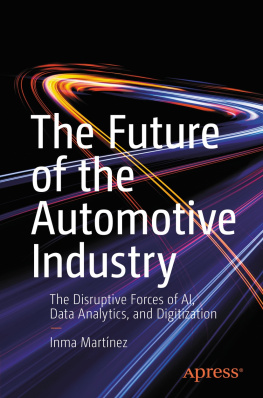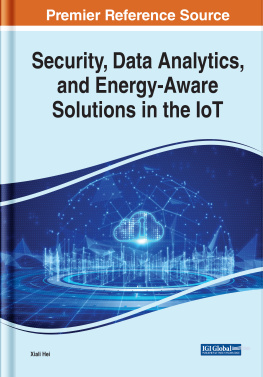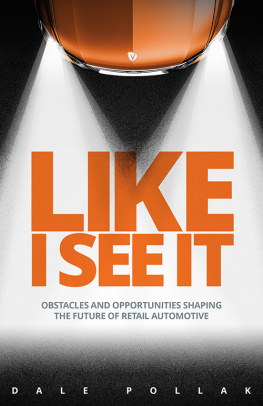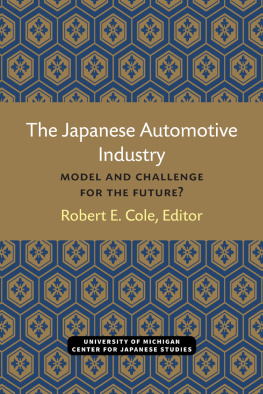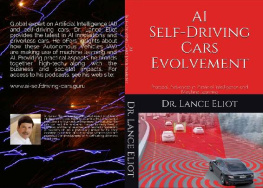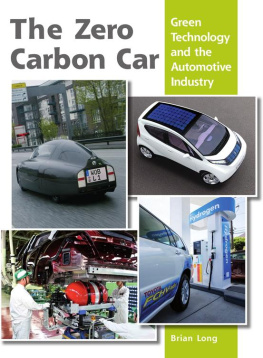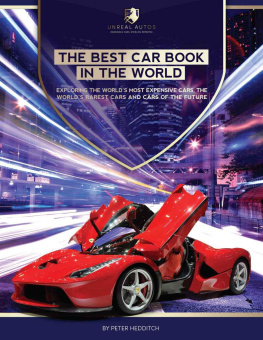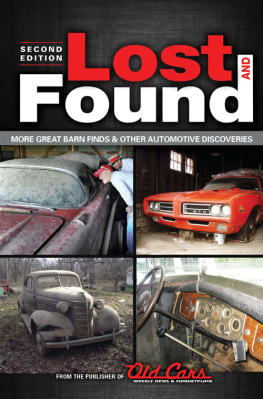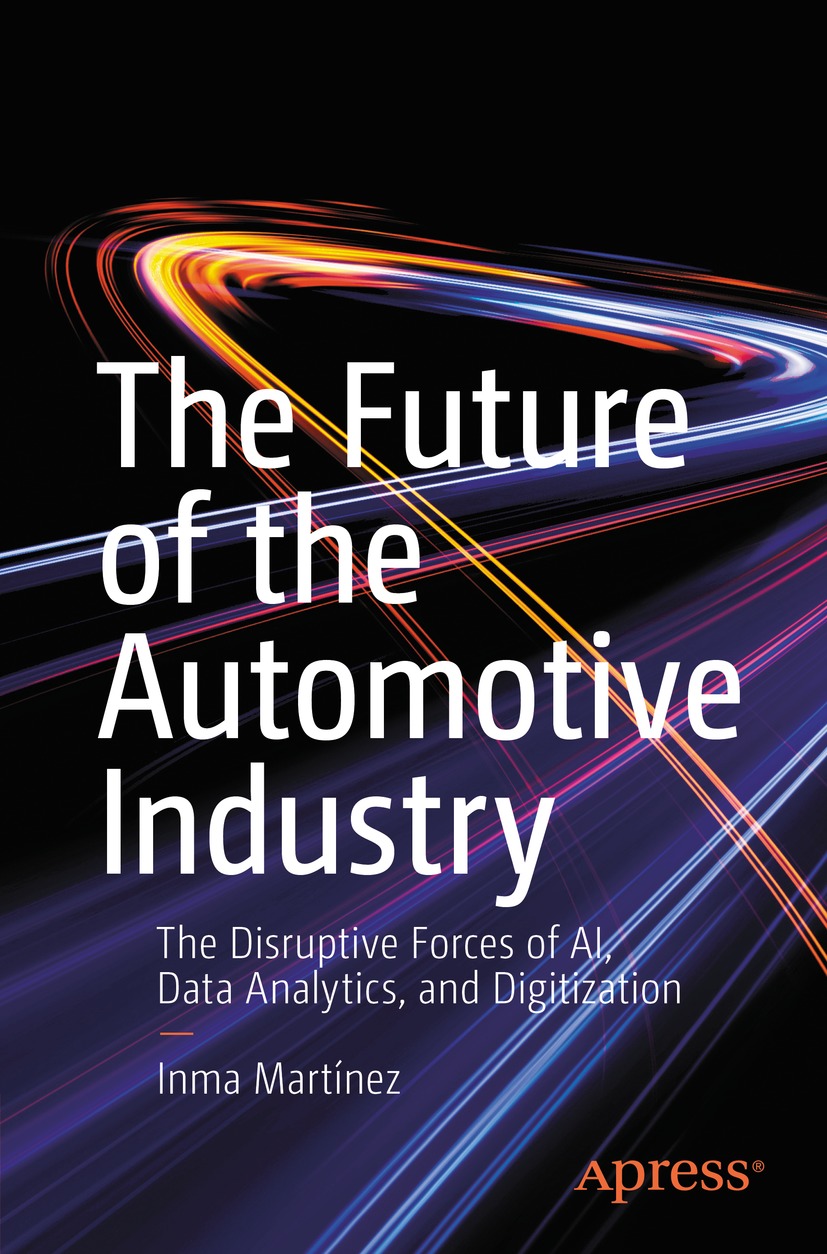Any source code or other supplementary material referenced by the author in this book is available to readers on GitHub via the books product page, located at www.apress.com/978-1-4842-7025-7. For more detailed information, please visit http://www.apress.com/source-code.
ISBN 978-1-4842-7025-7 e-ISBN 978-1-4842-7026-4
https://doi.org/10.1007/978-1-4842-7026-4
Inma Martnez 2021
This work is subject to copyright. All rights are reserved by the Publisher, whether the whole or part of the material is concerned, specifically the rights of reprinting, reuse of illustrations, recitation, broadcasting, reproduction on microfilms or in any other physical way, and transmission or information storage and retrieval, electronic adaptation, computer software, or by similar or dissimilar methodology now known or hereafter developed.
The use of general descriptive names, registered names, trademarks, service marks, etc. in this publication does not imply, even in the absence of a specific statement, that such names are exempt from the relevant protective laws and regulations and therefore free for general use.
The publisher, the authors and the editors are safe to assume that the advice and information in this book are believed to be true and accurate at the date of publication. Neither the publisher nor the authors or the editors give a warranty, expressed or implied, with respect to the material contained herein or for any errors or omissions that may have been made. The publisher remains neutral with regard to jurisdictional claims in published maps and institutional affiliations.
This Apress imprint is published by the registered company APress Media, LLC part of Springer Nature.
The registered company address is: 1 New York Plaza, New York, NY 10004, U.S.A.
Foreword
When I first heard from Inma that she was writing this book, I was surprised by my strong reaction to this news. I was, of course, excited and wanted to read it, but I also felt a certain sadness, as this book would be a memorial of the car as we used to know it, and a book that would cover an era that will soon be in the past.
Inma and I share the same burning passion for technology advancement. We first met in 2018 at an industry event in London where I spoke about autonomous, electric, connected construction equipment, such as wheel loaders, excavators, and articulated haulers, and she spoke about artificial intelligence. It was wonderful to find a new friend, who is fun, energetic and warm, and who also shares my nerdy interest in technology advancements and applications, with both futuristic and historical perspectives.
I have been excited about electric cars ever since I sat behind the steering wheel in a tandem seated prototype of an electric drivetrain. This was maybe around 1996 or 1997 and it was developed by ABB Corporate Research for BMW. It was easy to fall in love with the silence, the acceleration, the immediate response when stepping on the gas. More than 10 years later, with my frequent business trips to Palo Alto in the San Francisco Bay Area, I followed the progress of how Elon Musks Tesla cars were winning ground. First the Roadster, then my favorite - model S, which I was also able to see being made at the Tesla factory in Fremont, where they also manufactured the wire winding of their own electric motors. Then the X with the fun, but not so practical falcon wing doors, at least not in the snowy Nordic countries. Then the model 3 that many of my friends, including my dad, purchased and totally loved, and now the model Y, which is the model that finally is getting proper competition from automakers around the world. Even the team behind Fords legendary Mustang is finally jumping on the EV bandwagon - with Mach 1.
During the first 10 years of my career I developed software in diesel engines for trucks, buses and construction equipment. Combustion engines are truly fascinating pieces of art. It is amazing to see how engineers keep building onto these over 100 year old inventions, making them better and cleaner, and optimizing them in every possible condition and duty cycle. Still, they keep utilizing liquid fuel and, no matter how many engineering hours organizations are investing in improving them, it is certain that electric machines will always be more efficient than internal combustion engines, where over 50% of the energy is lost to exhaust fumes and heat.
There are many challenges ahead before one could say that electric cars are always better for users, customers, the environment and humans health. There is the necessary infrastructure to be built and the system innovation that requires to optimize the entire value chain that was once needed for conventional cars, so let us be factual and fair when we transform our society into a more sustainable one. Many of us have loved the sound of an accelerating muscle-car, enjoying the luxury of driving up and down coastlines in convertibles. Still today many more people continue to rely on gasoline or diesel fuel to manage all their mobility wants and needs until the proper infrastructure is built across the land. We want to keep moving but dont want to destroy the planet. This is why the future of electric vehicles is so interesting Something other than the green economy has to ignite its hockey stick growth.
When it comes to self-driving vehicles, I feel like most people: fully aware of all the intelligent functionality already embedded in modern cars that makes us brake more safely, change lanes more collaboratively, and switch gears more efficiently. The fact is that many cars are already driving for us more than we understand. For most of us, these cars are appreciated as comfortable and convenient machines. Then, there are the carmakers that want to push for self-driving more, that give the driver the experience of letting go of not only the gas pedal, with cruise control, but also the steering wheel. All of us that have tried it know how profound that experience is. I love the convenience in busy traffic, where there is a lot going on in front and around you. I love it for when I drive across the country and want to be relaxed, but if I really want to get to know a car, I want it to be less smart and more manual, so that I can feel its unique characteristics.
When thinking about wicked problems in todays society, and the potential dangers that can be removed, of course the easily distracted, sometimes tired human driver behind the steering wheel of a fast moving and often heavy vehicle is a clear issue to tackle first. Surprisingly, its really weird that, with all our focus on vehicular safety, we keep allowing humans to drive those machines. Im not saying that the human driver should be immediately removed, but isnt it clear that traffic accidents should be avoided? Isnt it true that with more self-driving functionality we could get closer to zero accidents? I dont think that there is such a big step to fully autonomous cars if we just get the policies to catch up with technology. Im sure this is a battle just as important as the exhaust emissions and clear air problems, but for some reason we seem to look at traffic accidents as tragic, but inevitable occurrences. Isnt it time that we reverse our mindsets and attitudes?

